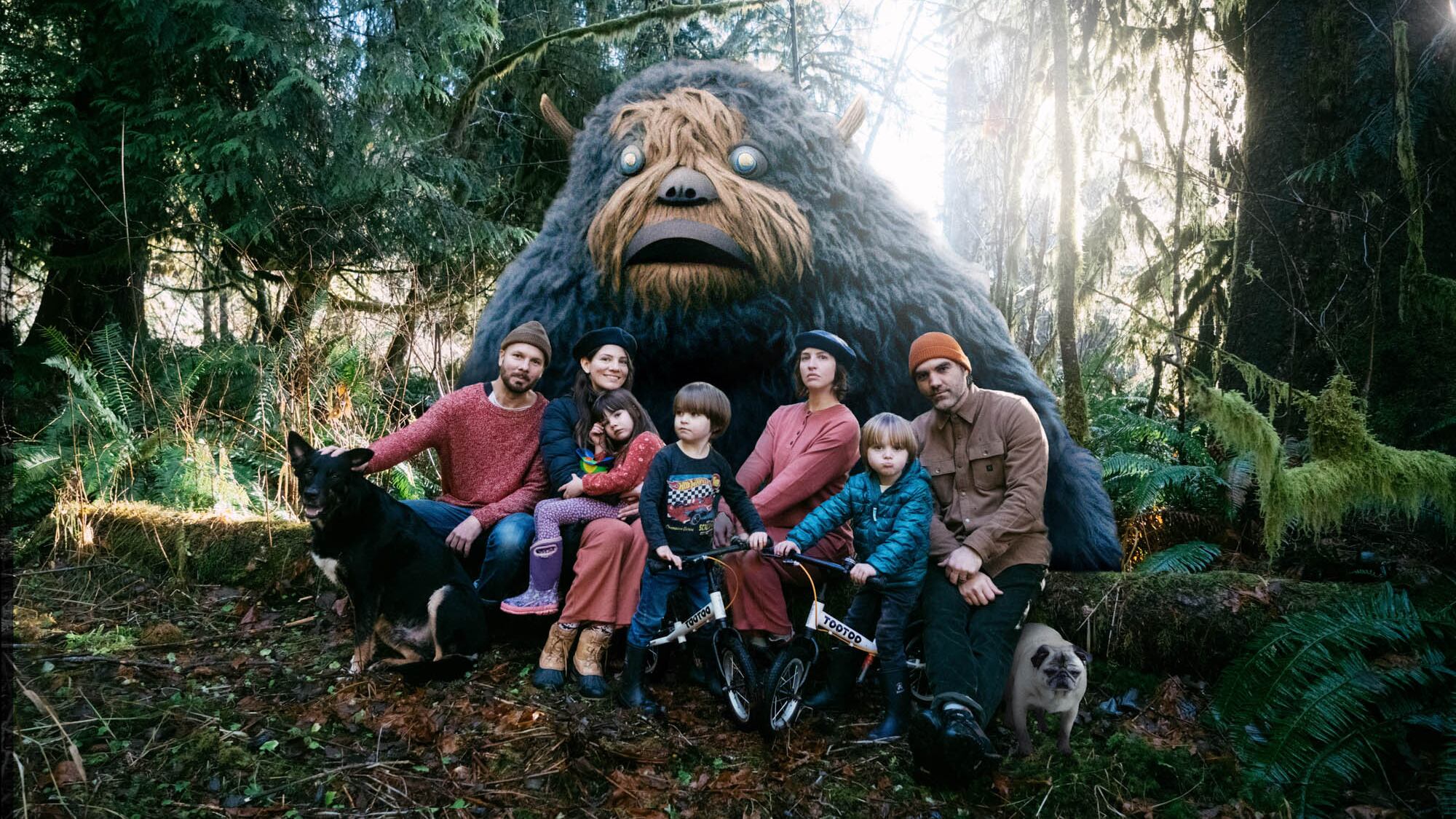When it comes to holiday cards, the Brooks family goes big.
Like, “inventing a ‘70s nature cult big”—dressing up for a photo and including a QR code to jokingly suggest that converts donate.
But last year, Rob Brooks ran out of card time, and the creative director at Lake Oswego’s Fort West marketing agency had to scratch that itch the week after Christmas. To create a new kind of family memento, he gave artificial intelligence a whirl for the first time.
“I don’t even drink anymore, and it was as if I was hungover because I was up all night messing with it,” Brooks says of his debut experience with the generative art program Midjourney.
The result was a series of locally viral images that portrayed Brooks, his wife Monica and their then-3-year-old twins Julian and Asher alongside mythological forest beasts—a creature gallery inspired by Where the Wild Things Are and Guillermo del Toro movies.
The photos landed on Instagram instead of friends’ refrigerators, but the response was surprising. The family wound up on the local news, and Brooks wrote a LinkedIn essay about AI that’s been read more than 100,000 times. He received invitations to collaborate from Intel’s marketing team and a former Simpsons artist.
Most strikingly, reality blurred for many of the beholders. Brooks estimates he probably received 100 messages asking some version of “Hey, where can I take my kids to see these sculptures?”
While those parents may be slightly disappointed to visit Portland’s Marshall Park or the North Fork Nehalem River—the sites of the photos—and not find any blue Sasquatches or bipedal fish emissaries, viewers likely also didn’t comprehend the pre- and post-production that contributed to the images’ believability.
With Midjourney, Brooks could scrape every fiber of the internet to generate creatures, giving the bot commands about movie references and cryptozoology to shape the design. But once a mythological beast was in progress, Brooks would venture into nature with his kids and Sony DSLR to shoot photos in ideal lighting.

Then, he spent hours in Photoshop and Adobe Lightroom trying to match the creature design and presentation with the setting’s ambience—the deal-sealer often being how the textured scales and fur mesh credibly with the wet shadows of Oregon’s wintertime woods.
The undertaking pushed Brooks into a position of thinking and speaking often about AI, ironically perhaps, because he says it was “only 10% of the process for my own project but 80% of the reason it gained so much attention.” Most crucially, Brooks hopes to preserve human skill and ingenuity around the technology.
“While craft evolves, it’s really important that we evolve with it and figure out how to not make it replace people but enhance us.”
While Brooks found the initial online response overwhelming enough to simply let the photos be, he says his family may “meet” a new set of creatures in the summer sunlight.
Certainly, these images are evoking childlike wonder from adults. Whether they can capture actual children’s imaginations is a tougher ask—at least as far as the two kids in Brooks’ photos are concerned.
“My [twins] look at the screen and are like, “OK, I want to play with my truck.”
See the rest of Willamette Week’s Best of Portland 2023 here!
